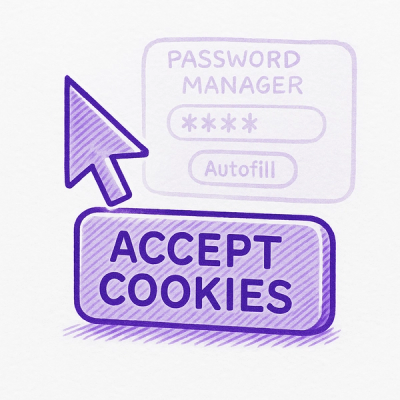
Security News
Rspack Introduces Rslint, a TypeScript-First Linter Written in Go
Rspack launches Rslint, a fast TypeScript-first linter built on typescript-go, joining in on the trend of toolchains creating their own linters.
Googol lets you interact with many resources provided by Google API V3.
channel = Googol::YoutubeResource.new url: 'youtube.com/fullscreen'
channel.id #=> 'UCxO1tY8h1AhOz0T4ENwmpow'
channel.title #=> "Fullscreen"
channel.description #=> "The first media company for the connected generation."
video = Googol::YoutubeResource.new url: 'youtu.be/Kd5M17e7Wek'
video.id #=> 'Kd5M17e7Wek'
video.title #=> "R.E.M. - Tongue (Video)"
video.description #=> "© 2006 WMG\nTongue (Video)"
account = Googol::GoogleAccount.new auth_params
account.email #=> 'user@google.com'
account = Googol::YoutubeAccount.new auth_params
# like the video 'Tongue' by R.E.M.
account.like! video_id: 'Kd5M17e7Wek'
# subscribe to Fullscreen’s channel
account.subscribe_to! channel_id: 'UCxO1tY8h1AhOz0T4ENwmpow'
# unsubscribe from Fullscreen’s channel
account.unsubscribe_from! channel_id: 'UCxO1tY8h1AhOz0T4ENwmpow'
# create a playlist called "Fullscreen"
account.create_playlist! title: "Fullscreen"
# find the first playlist with "Fullscreen" in the title
account.find_playlist_by title: /Fullscreen/i
# delete all playlists with "Fullscreen" in the description
account.delete_playlists! description: /Fullscreen/i
# add the video 'Tongue' by R.E.M. to your 'Fullscreen' playlist
playlist_id = account.find_or_create_playlist_by title: 'Fullscreen'
account.add_item_to! playlist_id, video_id: 'Kd5M17e7Wek'
# add a list of 3 videos by R.E.M. to your 'Fullscreen' playlist
playlist_id = account.find_or_create_playlist_by title: 'Fullscreen'
account.add_item_to! playlist_id, ['Kd5M17e7Wek', '3D1zWC1hs0', 'G2BCrByfZ74']
# remove all the items from your 'Fullscreen' playlist
playlist_id = account.find_or_create_playlist_by title: 'Fullscreen'
account.remove_all_items_from! playlist_id
The full documentation is available at rubydoc.info.
Googol exposes three different resources provided by Google API V3: Google Accounts, Youtube Accounts and Youtube Resources.
Use Googol::GoogleAccount to send and retrieve data to Google,
impersonating an existing Google account.
Available instance methods are id, email, verified_email, name,
given_name, family_name, link, picture, gender, and locale.
These methods require user authentication (see below).
Use Googol::YoutubeAccount to send and retrieve data to Youtube,
impersonating an existing Youtube account.
Available instance methods are id, title, description, thumbnail_url,
like!, subscribe_to!, find_or_create_playlist_by, and add_to!.
These methods require user authentication (see below).
Use Googol::YoutubeResource to retrieve read-only information about
public Youtube channels and videos.
Available instance methods are id, title, description, and thumbnail_url.
These methods require do not require user authentication.
In order to use Googol you must register your app in the Google Developers Console:
client ID and client secretserver keyRun the following command to make these tokens available to Googol:
require 'googol'
Googol::ClientTokens.client_id = '…'
Googol::ClientTokens.client_secret = '…'
Googol::ServerTokens.server_key = '…'
replacing the ellipses with the values from the Google Developers Console.
For actions that impersonate a Google or Youtube account, you also need to obtain authorization from the owner of the account you wish to impersonate:
In your web site, add a link to the Google's OAuth login page. The URL is:
Googol::GoogleAccount.oauth_url(redirect_url) # to impersonate a Google Account
Googol::YoutubeAccount.oauth_url(redirect_url) # to impersonate a Youtube Account
Upon authorization, the user is redirected to the URL passed as an argument, with an extra 'code' query parameter which can be used to impersonate the account:
account = Googol::GoogleAccount.new(code: code, redirect_uri: url) # to impersonate a Google Account
account = Googol::YoutubeAccount.new(code: code, redirect_uri: url) # to impersonate a Youtube Account
To prevent the user from having to authorize the app every time, store the account’s refresh_token in your database:
refresh_token = account.credentials[:refresh_token] # Store to your DB
To impersonate an account that has already authorized your app, just use the refresh_token:
account = Googol::GoogleAccount.new(refresh_token: refresh_token) # to impersonate a Google Account
account = Googol::YoutubeAccount.new(refresh_token: refresh_token) # to impersonate a Youtube Account
Remember to add every redirect URL that you plan to use in the Google Developers Console, and to set a Product name in Consent screen (under API & Auth).
To install on your system, run
gem install googol
To use inside a bundled Ruby project, add this line to the Gemfile:
gem 'googol', '~> 0.3.0'
Since the gem follows Semantic Versioning,
indicating the full version in your Gemfile (~> major.minor.patch)
guarantees that your project won’t occur in any error when you bundle update
and a new version of Googol is released.
Remember that you need to set up a Google app and include its credentials
in order for the gem to work (see above). In a Rails project, for instance,
you can do so by writing the following code in config/initializer/googol.rb:
Googol::ClientTokens.client_id = '…'
Googol::ClientTokens.client_secret = '…'
Googol::ServerTokens.server_key = '…'
replacing the ellipses with your app values from the Google Developers Console.
… and not youtube_it? Because youtube_it does not support Google API V3 and the previous version has already been deprecated by Google and will soon be dropped.
… and not Google Api Client? Because Google Api Client is poorly coded, poorly documented and adds many dependencies, bloating the size of your project.
… and not your own code? Because Googol is fully tested, well documented, has few dependencies and helps you forget about the burden of dealing with Google API!
To run the tests, you must give the test app permissions to access your Google and Youtube accounts. They are free, so feel free to create a fake one.
Run the following commands in a ruby session:
require 'googol'
Googol::GoogleAccount.oauth_url # => "https://accounts.google.com/o..."
Copy the last URL in a browser, and accept the terms. You will be redirected to a URL like http://example.com/?code=ABCDE
Copy the code parameter (ABCDE in the example above) and run:
account = Googol::GoogleAccount.new code: 'ABCDE'
account.credentials[:refresh_token]
Copy the token returned by the last command (something like 1AUJZh2x1...) and store it in an environment variable before running the test suite:
export GOOGOL_TEST_GOOGLE_REFRESH_TOKEN="1AUJZh2x1..."
Repeat all the steps above replacing GoogleAccount with YoutubeAccount to authorize access to your Youtube account:
export GOOGOL_TEST_YOUTUBE_REFRESH_TOKEN="2B6T5x23..."
Finally run the tests running rspec or rake. If you prefer not to set environment variables, pass the refresh token in the same line:
GOOGOL_TEST_GOOGLE_REFRESH_TOKEN="1AUJZh2x1..." GOOGOL_TEST_YOUTUBE_REFRESH_TOKEN="2B6T5x23..." rspec
Before you submit a pull request, make sure all the tests are passing and the code is fully test-covered.
To release an updated version of the gem to Rubygems, run:
rake release
Remember to bump the version before running the command, and to document your changes in HISTORY.md and README.md if required.
The googol gem follows Semantic Versioning. Any new release that is fully backward-compatible should bump the patch version (0.0.x). Any new version that breaks compatibility should bump the minor version (0.x.0)
Don’t hesitate to send code comments, issues or pull requests through GitHub! All feedback is appreciated. A googol of thanks! :)
FAQs
Unknown package
We found that googol demonstrated a not healthy version release cadence and project activity because the last version was released a year ago. It has 1 open source maintainer collaborating on the project.
Did you know?

Socket for GitHub automatically highlights issues in each pull request and monitors the health of all your open source dependencies. Discover the contents of your packages and block harmful activity before you install or update your dependencies.

Security News
Rspack launches Rslint, a fast TypeScript-first linter built on typescript-go, joining in on the trend of toolchains creating their own linters.

Security News
Hacker Demonstrates How Easy It Is To Steal Data From Popular Password Managers

Security News
Oxlint’s new preview brings type-aware linting powered by typescript-go, combining advanced TypeScript rules with native-speed performance.